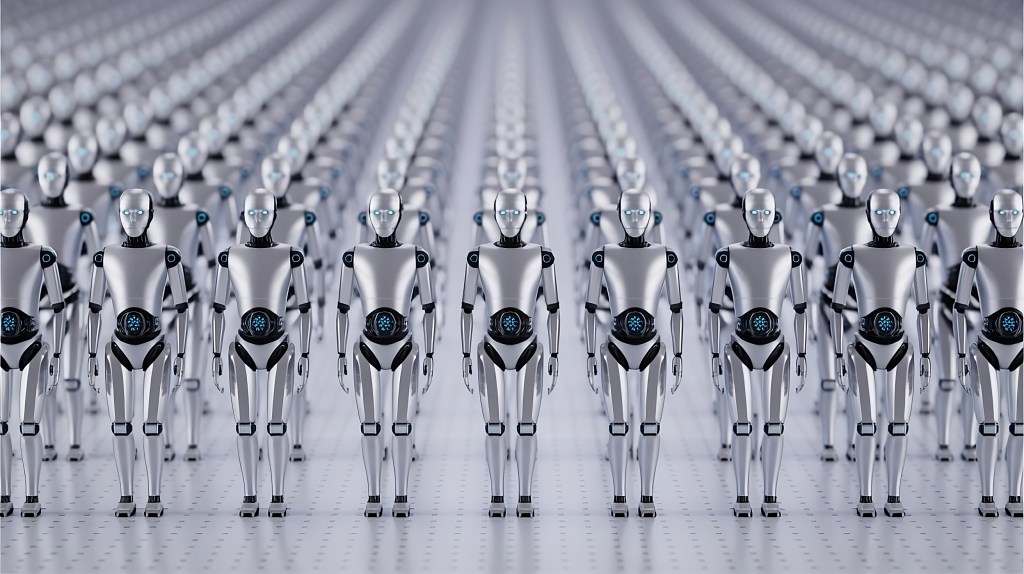Join our daily and weekly newsletters for the latest updates and exclusive content on industry-leading AI coverage. Learn More
Bigger models aren’t driving the next wave of AI innovation. The real disruption is quieter: Standardization.
Launched by Anthropic in November 2024, the Model Context Protocol (MCP) standardizes how AI applications interact with the world beyond their training data. Much like HTTP and REST standardized how web applications connect to services, MCP standardizes how AI models connect to tools.
You’ve probably read a dozen articles explaining what MCP is. But what most miss is the boring — and powerful — part: MCP is a standard. Standards don’t just organize technology; they create growth flywheels. Adopt them early, and you ride the wave. Ignore them, and you fall behind. This article explains why MCP matters now, what challenges it introduces, and how it’s already reshaping the ecosystem.
How MCP moves us from chaos to context
Meet Lily, a product manager at a cloud infrastructure company. She juggles projects across half a dozen tools like Jira, Figma, GitHub, Slack, Gmail and Confluence. Like many, she’s drowning in updates.
By 2024, Lily saw how good large language models (LLMs) had become at synthesizing information. She spotted an opportunity: If she could feed all her team’s tools into a model, she could automate updates, draft communications and answer questions on demand. But every model had its custom way of connecting to services. Each integration pulled her deeper into a single vendor’s platform. When she needed to pull in transcripts from Gong, it meant building yet another bespoke connection, making it even harder to switch to a better LLM later.
Then Anthropic launched MCP: An open protocol for standardizing how context flows to LLMs. MCP quickly picked up backing from OpenAI, AWS, Azure, Microsoft Copilot Studio and, soon, Google. Official SDKs are available for Python, TypeScript, Java, C#, Rust, Kotlin and Swift. Community SDKs for Go and others followed. Adoption was swift.
Today, Lily runs everything through Claude, connected to her work apps via a local MCP server. Status reports draft themselves. Leadership updates are one prompt away. As new models emerge, she can swap them in without losing any of her integrations. When she writes code on the side, she uses Cursor with a model from OpenAI and the same MCP server as she does in Claude. Her IDE already understands the product she’s building. MCP made this easy.
The power and implications of a standard
Lily’s story shows a simple truth: Nobody likes using fragmented tools. No user likes being locked into vendors. And no company wants to rewrite integrations every time they change models. You want freedom to use the best tools. MCP delivers.
Now, with standards come implications.
First, SaaS providers without strong public APIs are vulnerable to obsolescence. MCP tools depend on these APIs, and customers will demand support for their AI applications. With a de facto standard emerging, there are no excuses.
Second, AI application development cycles are about to speed up dramatically. Developers no longer have to write custom code to test simple AI applications. Instead, they can integrate MCP servers with readily available MCP clients, such as Claude Desktop, Cursor and Windsurf.
Third, switching costs are collapsing. Since integrations are decoupled from specific models, organizations can migrate from Claude to OpenAI to Gemini — or blend models — without rebuilding infrastructure. Future LLM providers will benefit from an existing ecosystem around MCP, allowing them to focus on better price performance.
Navigating challenges with MCP
Every standard introduces new friction points or leaves existing friction points unsolved. MCP is no exception.
Trust is critical: Dozens of MCP registries have appeared, offering thousands of community-maintained servers. But if you don’t control the server — or trust the party that does — you risk leaking secrets to an unknown third party. If you’re a SaaS company, provide official servers. If you’re a developer, seek official servers.
Quality is variable: APIs evolve, and poorly maintained MCP servers can easily fall out of sync. LLMs rely on high-quality metadata to determine which tools to use. No authoritative MCP registry exists yet, reinforcing the need for official servers from trusted parties. If you’re a SaaS company, maintain your servers as your APIs evolve. If you’re a developer, seek official servers.
Big MCP servers increase costs and lower utility: Bundling too many tools into a single server increases costs through token consumption and overwhelms models with too much choice. LLMs are easily confused if they have access to too many tools. It’s the worst of both worlds. Smaller, task-focused servers will be important. Keep this in mind as you build and distribute servers.
Authorization and Identity challenges persist: These problems existed before MCP, and they still exist with MCP. Imagine Lily gave Claude the ability to send emails, and gave well-intentioned instructions such as: “Quickly send Chris a status update.” Instead of emailing her boss, Chris, the LLM emails everyone named Chris in her contact list to make sure Chris gets the message. Humans will need to remain in the loop for high-judgment actions.
Looking ahead
MCP isn’t hype — it’s a fundamental shift in infrastructure for AI applications.
And, just like every well-adopted standard before it, MCP is creating a self-reinforcing flywheel: Every new server, every new integration, every new application compounds the momentum.
New tools, platforms and registries are already emerging to simplify building, testing, deploying and discovering MCP servers. As the ecosystem evolves, AI applications will offer simple interfaces to plug into new capabilities. Teams that embrace the protocol will ship products faster with better integration stories. Companies offering public APIs and official MCP servers can be part of the integration story. Late adopters will have to fight for relevance.
Noah Schwartz is head of product for Postman.


